In short, there is a plenty of definitions of “saturation” with different parameters and even signs of \$I_{\mathrm C}\$. They refer to all vast region that is neither usable for an amplifier nor is a cut-off.
The on–on region (when both junctions are on), called hard saturation by Ramshaw, is a mode rarely used in practice (except some switching circuits). It meets the definition of saturation from English Wikipedia. It isn’t pictured on the graph.
A more practically relevant case is quasi-saturation, where no further increase in \$I_{\mathrm C}\$ occurs when \$I_{\mathrm B}\$ increases. It is characterised by low \$V_{\mathrm{BC}}\$, but the base–collector junction is still reverse biased. It isn’t a saturation as English Wikipedia (text) understands it and fits under its “active”.
The low-voltage region immediately before on–on is “saturation” even by the voltage-based definition from Wikipedia, but has currents similar to forward-active (see @The Photon’s comment). Like the on–on region, both junctions are forward-biased, albeit the collector one only slightly. But, unlike the on–on region, the collector junction isn’t actually on since its knee voltage isn’t reached. If the C–B voltage is only slightly forward, then there is still a depletion zone along the junction, and very few collector or base carriers leak through it. But, if the E–B is open, carriers from the emitter are injected to the base like in a regular forward-active mode, and some part of them make the way to collector via diffusion. Thus collector’s current is directed the same way as in a usual forward-active (i. e. β > 0). This mode is rarely considered because of its low current gain. It’s possibly the thing denoted as “saturation” on the graph, since its \$V_{\mathrm{CE}}\$ is still above zero. At that picture one can see where the collector current vanishes (unfortunately, the on–on region isn’t shown).
Note: Ī̲ sometimes use a home-made and probably non-standard terminology, but it appears that electronics textbooks didn’t establish a good one because of neglect of marginal modes of operation.

